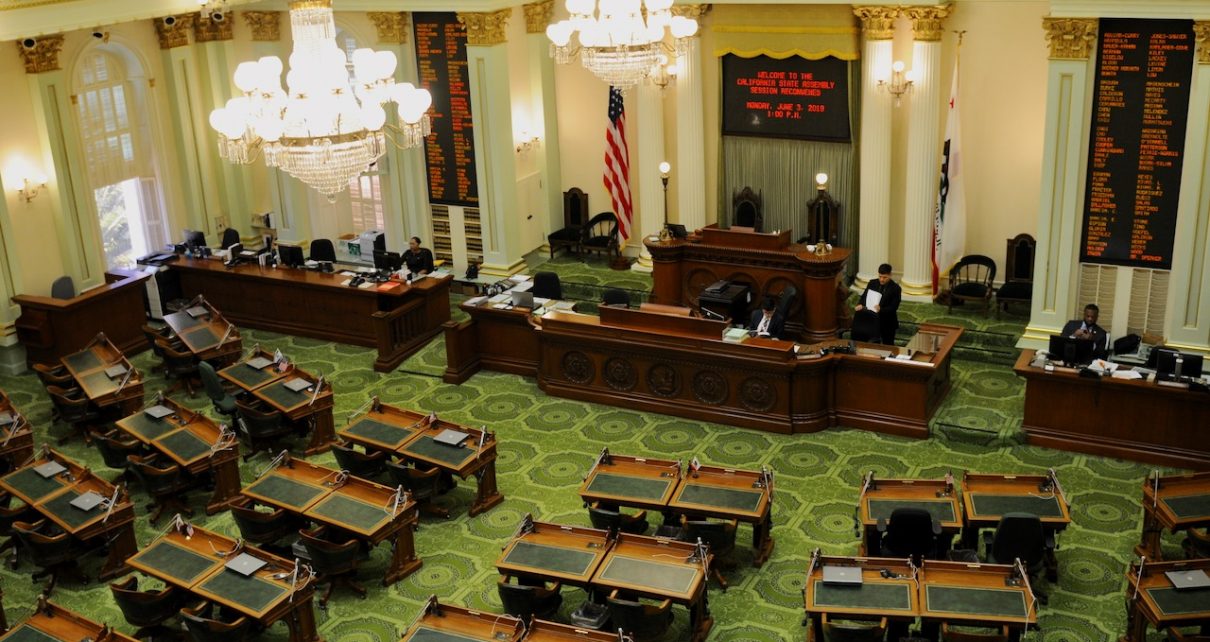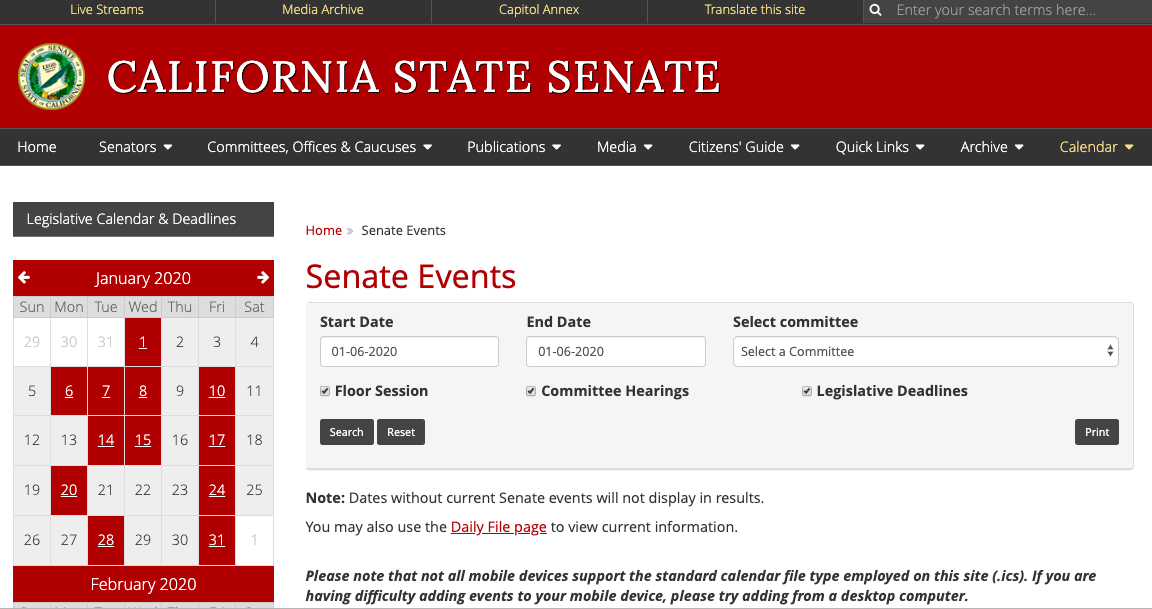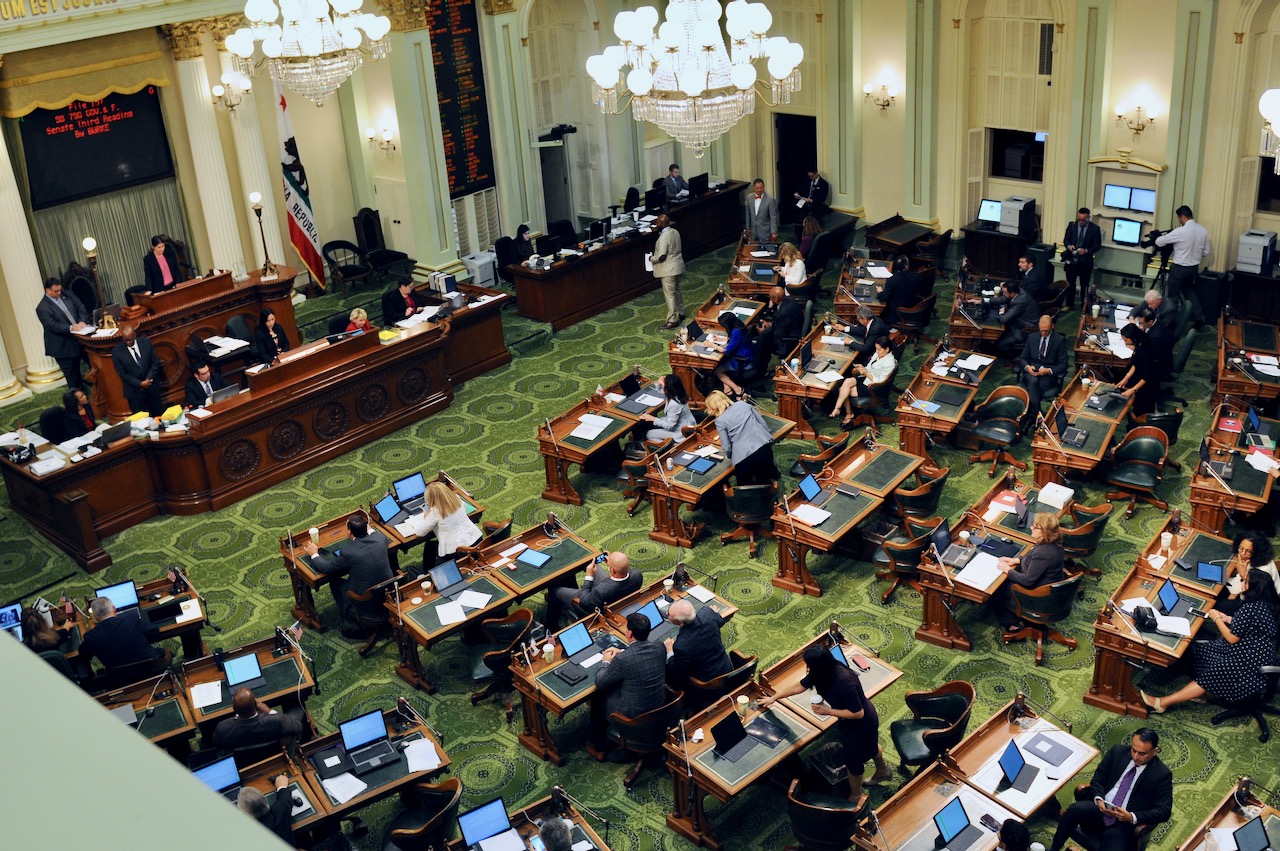
California State Assembly. (Photo: Kevin Sanders for California Globe)
A Bill’s ‘Keys’ – What Are They?
Unlocking the keys to California legislation
By Chris Micheli, November 15, 2019 6:03 am
Each bill in the California Legislature contains certain features such as an enacting clause, a title, the author’s name, a bill number, and the Legislative Counsel’s Digest, among other provisions. At the end of the Legislative Counsel’s Digest is a line of “keys”. It looks like the following:
Vote: majority Appropriation: yes Fiscal Committee: yes Local Program: yes
OR
Vote: 2/3 Appropriation: no Fiscal Committee: no Local Program: no
What are the bill’s keys? These “keys” cover four areas and the keys are determined by the Office of the Legislative Counsel for each bill that the office drafts. The four keys are:
- What is the vote requirement for the bill to pass?
- Does the bill appropriate funds?
- Should the bill be referred to the fiscal committee (i.e., Appropriations Committee) in both houses?
- Does the bill impose a state-mandated local program?
Let’s explore each of the bill’s keys:
Vote
What is the vote requirement for the bill to pass? In order words, what vote threshold must be met? Most bills in the California Legislature require a simple majority vote for passage. This means 21 votes in the 40-member State Senate and 41 votes in the 80-member State Assembly. There are other vote thresholds, including 2/3 and even 4/5, for some measures. These vote thresholds are found in the California Constitution or in the California Government Code. The key specifies which vote is required.
Appropriations
Does the bill appropriate funds? If the bill results in an appropriation from the State’s General Fund or any special funds, then an appropriation would occur. The key specifies “yes” the bill would result in an appropriation or “no” the bill would not appropriate funds.
Fiscal Committee
Joint Rule 10.5 governs this determination because this particular Joint Rule provides guidance to the Office of the Legislative Counsel when determining whether a bill should be “keyed” as a fiscal bill. If Legislative Counsel determines that a bill is “fiscal,” then the measure is supposed to be referred to the Appropriations Committee in each house.
On the other hand, if a bill is not keyed fiscal, then it will be sent only to a policy committee (or two) for a hearing (unless the Appropriations Committee requests and receives the bill). The following is the text, in part, of Joint Rule 10.5:
Re-referral to Fiscal and Rules Committees
10.5.A bill shall be re-referred to the fiscal committee of each house when it would do any of the following:
(1) Appropriate money.
(2) Result in a substantial expenditure of state money.
(3) Result in a substantial increase or loss of revenue to the state.
(4) Result in substantial reduction of expenditures of state money by reducing, transferring, or eliminating any existing responsibilities of any state agency, program, or function.
The above requirements do not apply to bills or concurrent resolutions that contemplate the expenditure or allocation of operating funds.
This rule may be suspended in either house as to any particular bill by approval of the Committee on Rules of the house and two-thirds vote of the membership of the house.
Based upon the language of this Joint Rule, there are only four instances in which a bill is keyed “fiscal.” First, a bill that appropriates money, which is easy to ascertain because the language of the bill actually appropriates a specified sum of money. Second, a bill that results in a “substantial expenditure of state money.”
Third, a bill that results in a “substantial increase or loss of revenue to the state.” This type of bill is relatively easy to determine as well, such as a tax bill that creates a new tax credit or exemption (i.e., it results in loss of revenue) or a bill that repeals a tax credit or exemption (i.e., it results in an increase of revenue).
Fourth, a bill that results in reduction of expenditures of state money relating to a state agency program or functions. This bill, too, should be easy to determine because the bill would specify that it reduces, transfers or eliminates an existing program, agency or function of the state. The key specifies “yes” the bill should be referred to the fiscal committee or “no” it should not be referred.
Local Program
The California Constitution requires the state to reimburse local agencies and school districts for certain costs mandated by the state. Statutory provisions establish procedures for making that reimbursement pursuant to Part 7 (commencing with Section 17500) of Division 4 of Title 2 of the Government Code. As a result, if the Commission on State Mandates determines that the bill contains costs mandated by the state, reimbursement for those costs must be made pursuant to these statutory provisions.
The most common example of this is when a bill expands the definition of a crime, thereby imposing a state-mandated local program. The key specifies “yes” the bill would result in a state-mandated local program or “no” the bill would not result in such a mandate.
- Remote Marriage Licenses in California - July 27, 2025
- Legislative Policy on Bay Area Pilotage - July 26, 2025
- Small Craft Harbors and Waterways in California - July 25, 2025







